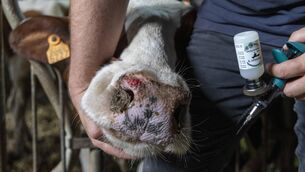Milking liners need changing regularly
And did you know that, on average, a cow spends 60 hours of every lactation in contact with this liner?
Maybe you worry that the recommendation to change your milking machine liners has been developed by someone trying to make a sale?
Maybe you think liners that are “a bit worn” won’t really make much difference? Rest assured that the CellCheck advice to change liners at regular intervals will save you money and improve the health of your cow. Liners are designed to flex and squeeze the teat during each pulsation cycle. This is essential to massage the teat during milking and maintain its blood supply. As soon as they start to work, liners lose tension, absorb fat and hold bacteria. There is a point at which this deterioration is sufficient to reduce the speed and completeness of milking, resulting in a loss in milk yield.
This deterioration in liner quality can also increase teat-end damage and increase the spread of mastitis bacteria. Liner life is influenced the characteristics of the materials they are made from, cleaning and storage conditions.
To reduce the impact of aged liners on milk yield and udder health, the industry recommendation is to change liners after 2,000 milkings, or six months, whichever comes first. When liners are changed, estimate when the next 2,000 milkings will have occurred, and mark the date on your calendar.












